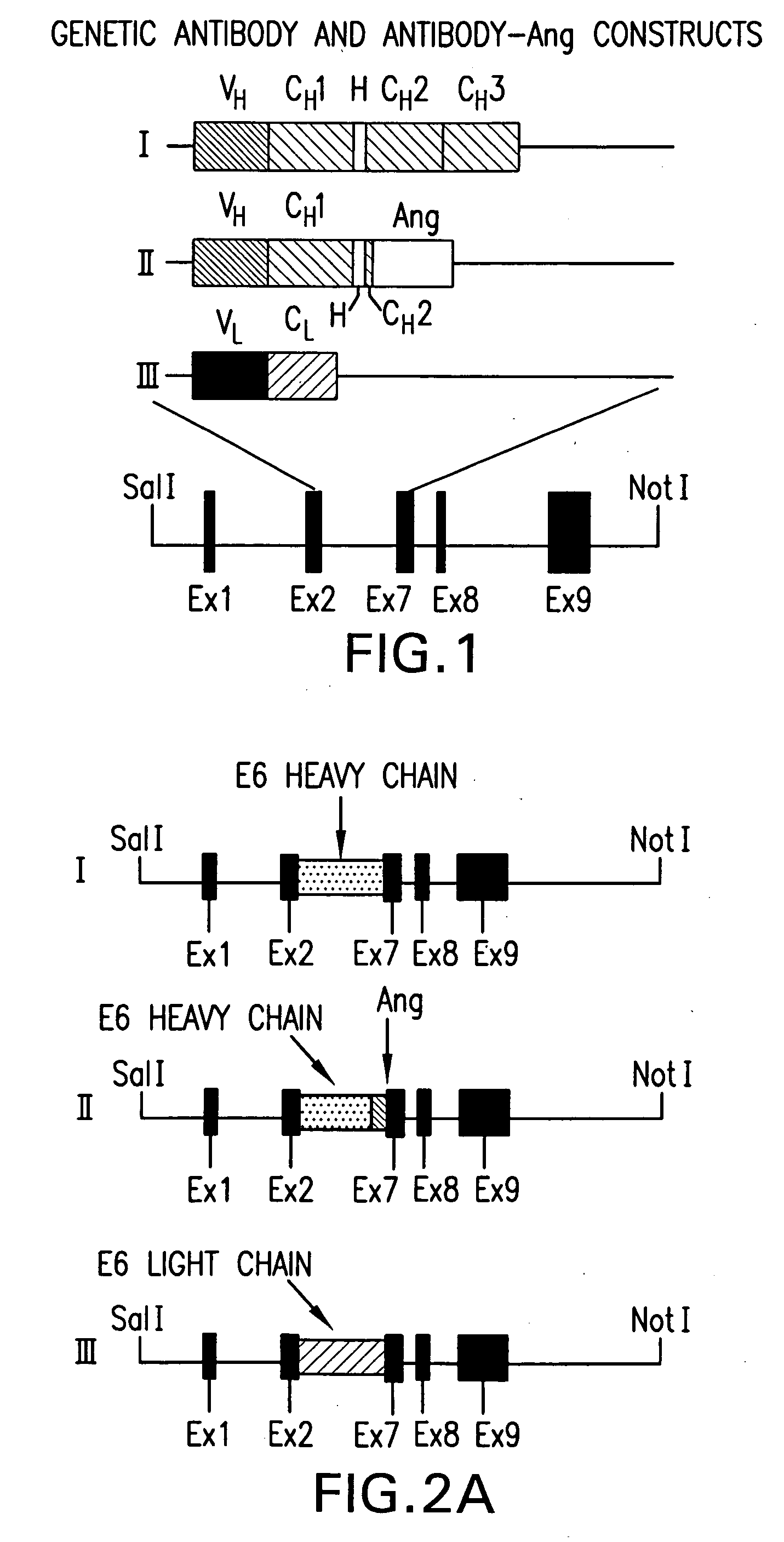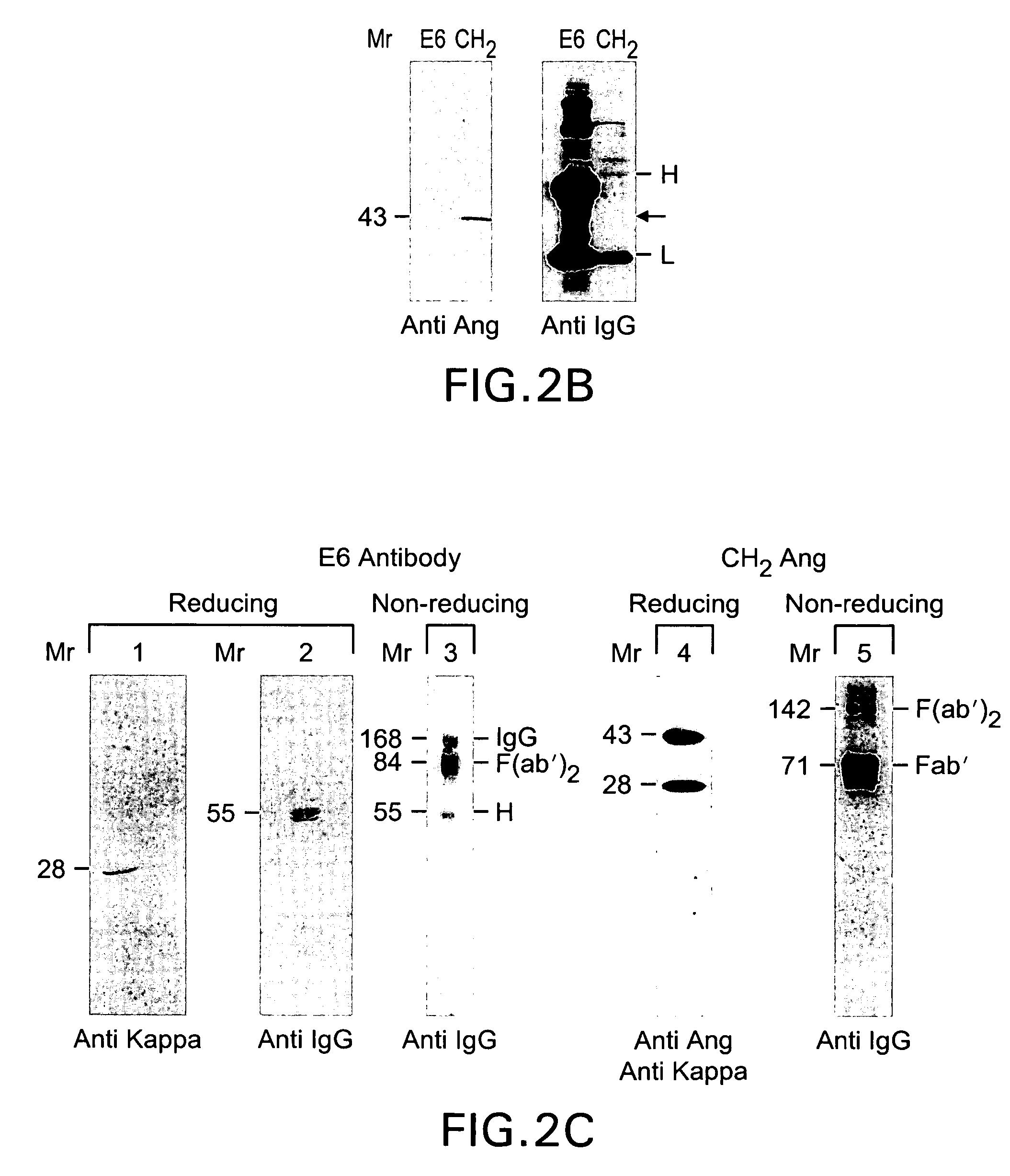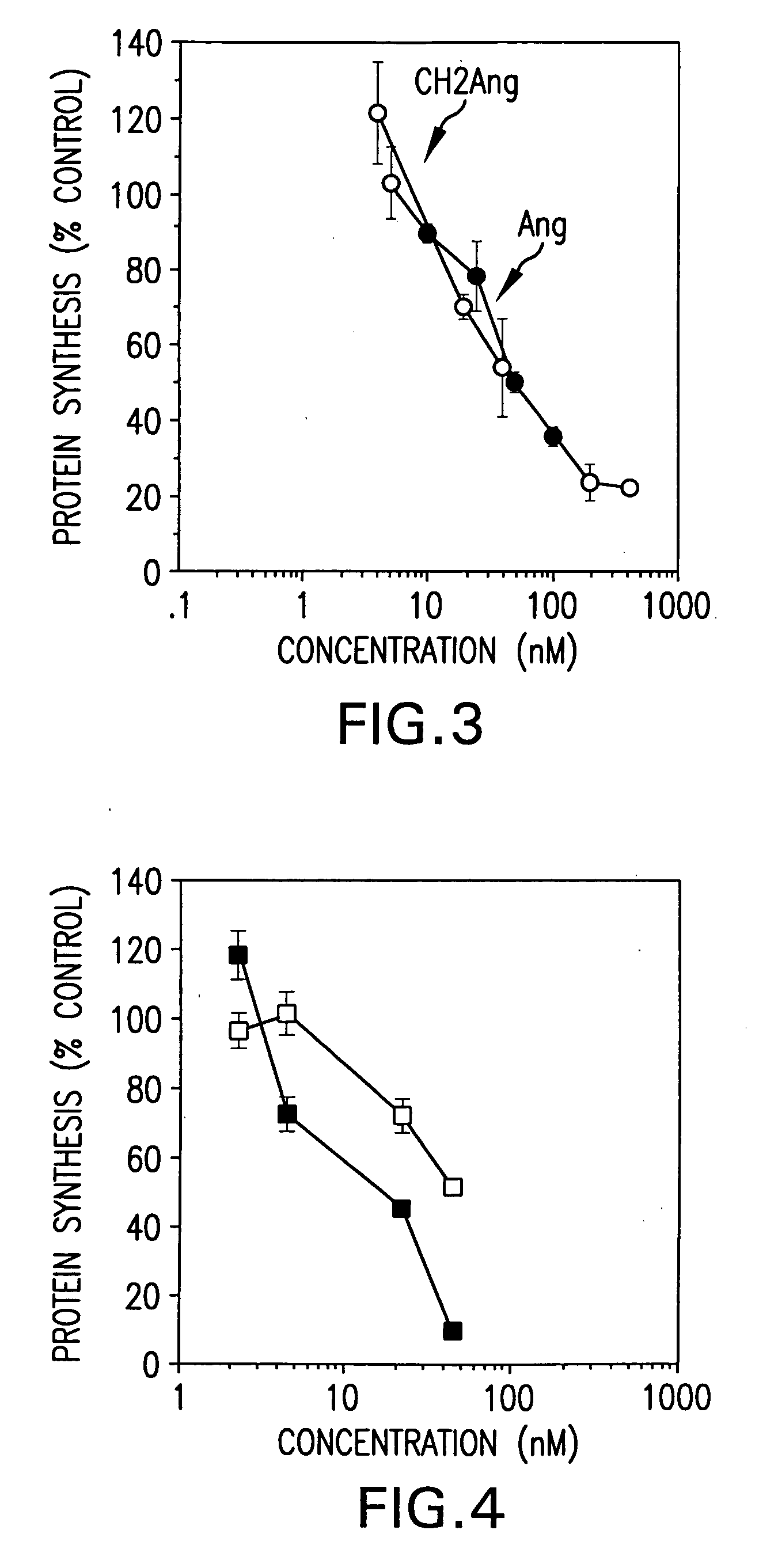Transgenically produced fusion proteins
- Summary
- Abstract
- Description
- Claims
- Application Information
AI Technical Summary
Benefits of technology
Problems solved by technology
Method used
Image
Examples
example 1
Generation and Testing of An Antibody-Carboxypeptidase B Fusion
[0163] An F(ab′) 2-enzyme fusion protein was subcloned into a Goat Beta-Casein expression vector BC350. For each one of the 3 constructs: 213 (MF21q3-13, Fd-enzyme fusion gene), LC (LC3, light chain), and 141 (MF141-4, pro domain with C-terminal leucine), expression cassettes were separated from the bacterial plasmid sequences. The three transgenes were then co-microinjected in mouse zygotes. Seven transgenic mouse lines that carry all 3 subunits of the F(ab′)2-enzyme fusion protein antibody and 3 lines that only carried transgenes LC and 213 were analyzed. Milk samples were collected from founder and first generation females, and tested for ELISA and enzyme activity assays. Four of the seven lines carrying 3 transgenes express the F(ab′)2-enzyme fusion protein at levels superior to 1 mg / ml (possibly up to 4-6 mg / ml), whereas all 3 lines carrying only the LC and 213 transgenes express at levels inferior to 0.1 mg / ml.
[0...
example 2
Generation and Testing of Anti-Transferrin Receptor Antibody / Angiogenin Fusion Constructs
[0182] This Examples shows expression of anti-transferrin receptor antibody / angiogenin fusion proteins in the mammary gland of transgenic mice. A chimeric mouse / human antibody directed against the human transferrin receptor (E6) was fused as its CH2 domain to the gene for a human angiogenic ribonuclease, angiogenin (Ang). It was expressed in the mammary gland of mice and secreted into mouse milk. Expression levels in milk were approximately 0.8 g / L. The chimeric protein retained antibody binding activity and protein synthesis inhibitory activity equivalent to that of free Ang. It was specifically cytotoxic to human tumor cells in vitro.
Materials and Methods
Transgenic Mice
[0183] Transgenic mice were generated following standard published procedures (Roberts et al., 1992; DiTullio et al., 1992; Gutierrez et al., 1996). Founder mice were bred to produce lactating females and the milk collecte...
example 3
Expression of an Antihuman Transferrin Receptor Antibody and Antibody-Angiogenin Fusion Protein in the Milk of Transgenic Mice
[0187] The DNA constructs used to produce the transgenic mice are illustrated in FIG. 1 and FIG. 2A. The chimeric antitransferin receptor antibody used in the studies described was originally fused to human tumor necrosis factor (Hoogenboom et al., 1991) and then to human ribonuclease, angiogenin (Ang, Rybak, et al., 1992). The Ang gene was fused behind the first three amino acid residues of 5′ region of the CH2 domain of the antibody, thus leaving the hinge region unaffected and dimeriaation of the heavy chain possible. The goal was to create humanized immunotoxin-like proteins that might elicit less immunogenic side effects when administered to patients. The in vivo mammalian cell expression systems yielded very little material functional studies, especially when the antibody was fused to the human Rnase, angiogenin (Ang) Ang is a member of the RNase A sup...
PUM
| Property | Measurement | Unit |
|---|---|---|
| Linear density | aaaaa | aaaaa |
| Temperature | aaaaa | aaaaa |
| Temperature | aaaaa | aaaaa |
Abstract
Description
Claims
Application Information
 Login to View More
Login to View More - R&D
- Intellectual Property
- Life Sciences
- Materials
- Tech Scout
- Unparalleled Data Quality
- Higher Quality Content
- 60% Fewer Hallucinations
Browse by: Latest US Patents, China's latest patents, Technical Efficacy Thesaurus, Application Domain, Technology Topic, Popular Technical Reports.
© 2025 PatSnap. All rights reserved.Legal|Privacy policy|Modern Slavery Act Transparency Statement|Sitemap|About US| Contact US: help@patsnap.com



